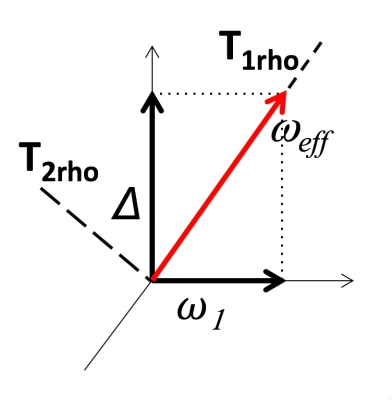Basics of Molecular Dynamic Sensitive MRI; MT, CEST & Rotating-Frame Relaxation
Basics of Molecular Dynamic Sensitive MRI; MT, CEST & Rotating-Frame Relaxation
Weekend Course
Weekend Course
ORGANIZERS: Kannie WY Chan, Gregory Metzger
Sunday, 12 May 2019
| Room 512A-H | 08:00 - 12:00 | Moderators: Greg Stanisz, Jiadi Xu |
Skill Level: Basic to Intermediate
Session Number: WE-19
Overview
This course will cover the mechanisms, acquisition strategies, quantification methods and applications of methods sensitive to molecular dynamics. These techniques offer unique contrasts to assess biological processes and diseases not possible with standard contrasts. In particular, the lecturers will covers topics on magnetization transfer (MT), chemical exchange saturation transfer (CEST), rotating frame relaxation methods (T1rho, T2rho & RAFF).
Target Audience
Basic scientists and clinicians who desire an introduction to exchange-based and molecular dynamics methods and applications.
Educational Objectives
As a result of attending this course, participants should be able to:
- Explain the acquisition and quantification methods used for each of the methods covered in the lectures;
- Describe the potential pitfalls related to the acquisition and interpretation of the results;
- Identify applications that would benefit from the methods covered; and
- Illustrate what the measurements mean in terms of the specific biomedical application.
Overview
This course will cover the mechanisms, acquisition strategies, quantification methods and applications of methods sensitive to molecular dynamics. These techniques offer unique contrasts to assess biological processes and diseases not possible with standard contrasts. In particular, the lecturers will covers topics on magnetization transfer (MT), chemical exchange saturation transfer (CEST), rotating frame relaxation methods (T1rho, T2rho & RAFF).
Target Audience
Basic scientists and clinicians who desire an introduction to exchange-based and molecular dynamics methods and applications.
Educational Objectives
As a result of attending this course, participants should be able to:
- Explain the acquisition and quantification methods used for each of the methods covered in the lectures;
- Describe the potential pitfalls related to the acquisition and interpretation of the results;
- Identify applications that would benefit from the methods covered; and
- Illustrate what the measurements mean in terms of the specific biomedical application.
| 08:00 |
Quantitative Magnetization Transfer Imaging for Characterizing Pathology
Seth Smith
The purpose of this presentation is to provide an overview of the basics of quantitative magnetization transfer (qMT) MRI acquisition, analysis, and implementation. We will additionally provide an overview of the application of qMT in health and disease and examine the opportunities for qMT in characterizing pathology.
|
|
| 08:35 |
CEST MRI for Beginners
Eleni Demetriou
What is the origin of CEST contrast in tissues? What are the basic steps for generating CEST contrast maps including acquisition and post-processing of CEST MRI data? What are its current applications and its limits? The purpose of this talk will be to outline the basic mechanisms of CEST either through MRS or imaging. To discuss the progress of CEST imaging towards clinical practise and to highlight extraordinary developments within this field.
|
|
| 09:10 |
 |
Bringing It All Together: Relaxation, T1rho, T2rho & CEST
Elena Vinogradov
Spin-lock experiments employ RF to probe dynamic processes in molecules. CEST also employ RF to create contrast and explore spin dynamics. In all these cases, in the presence of RF, an effective field is formed and the relaxation processes are governed by the constants parallel and perpendicular to the effective field – T1rho and T2rho. We will dwell in more details on the basic principles, equations and features governing relaxation and dynamics processes in these methods.
|
| 09:45 |
Break & Meet the Teachers | |
| 10:15 |
Exploiting Relaxation Along Fictitious Fields
Silvia Mangia
The SNR increase of high fields needs to be leveraged with the challenge of maintaining the flexibility of tuning the MRI contrast to the molecular dynamics of interest. Relaxation methods based on frequency-modulated pulses, including T1ρ and T2ρ using adiabatic pulses, and the non-adiabatic method entitled relaxation along a fictitious field (RAFF) in the rotating frame of rank 'n' (RAFFn), offer sensitivity to molecular dynamics in intermediate and slow regimes. The reduced power deposition of RAFFn, along with the opportunity of enhancing sensitivity to exchange by tuning the periodicity of irradiation, are distinct and compelling advantages of the methodology.
|
|
| 10:50 |
C’est La Vie: Selected Topics on In Vivo CEST Video Permission Withheld
Lucio Frydman
This talk will center on analyzing the potential associated with CEST-based MRI, based on both the method’s physical principles and on experiences with in vivo rodent experiments. Following an initial description on how molecular-based information can be extracted based on chemical exchanges of labile molecular protons with the solvent, attention will be focused on methods to improve the resolution and specificity of the method. Various acquisition modes, pulse sequences and acquisition conditions, will be introduced. On the basis of these procedures, applications geared at observing dynamic processes related to tumor progression, to biochemical metabolism and to functional stimuli, will be discussed.
|
|
| 11:25 |
Role of Molecular Dynamic Imaging in Musculoskeletal Applications
Mikko Nissi
This course part covers the applications of molecular dynamic imaging, or more precisely, MT/CEST, T2, T1rho, adiabatic T1rho and T2rho, and RAFF relaxation times in the musculoskeletal applications. The lectures will briefly cover possible musculoskeletal targets for the methods, focusing mostly on articular cartilage which is most frequently studied and affected in musculoskeletal disorders. Furthermore, the methods will be briefly overviewed with respect to the musculoskeletal application, followed by their potential uses.
|
|
| 12:00 |
Lunch & Meet the Teachers |
 Back to Program-at-a-Glance |
Back to Program-at-a-Glance |  Back to Top
Back to Top